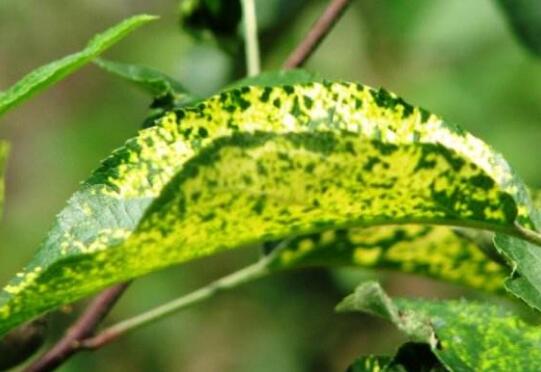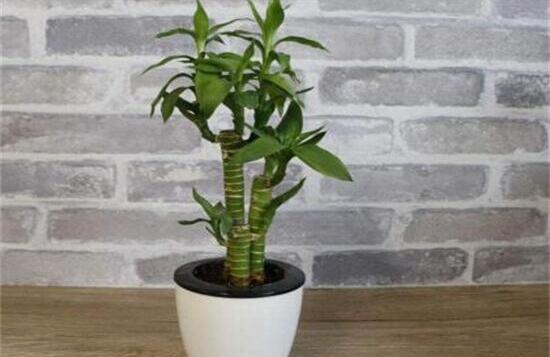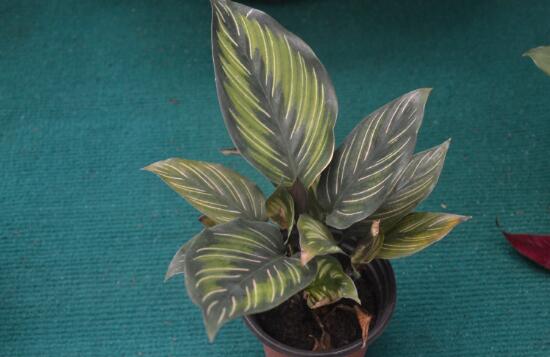5 diseases/medicine control effect quickly
In the process of cultivating primroses, the last thing we want to encounter is diseases and insect pests. This kind of problems do great harm to plants, which will not only affect their beautiful plant shape, but also lead to plant death in serious cases. So how do we need to do pest control of primroses? Next, the editor will take you to learn about it.
Pest control of primroses
1. Mosaic disease

Mosaic disease is a worldwide virus disease, which does great harm to primroses. At the initial stage of the disease, chlorotic angular spots appear on the leaves, and finally turn brown, and in serious cases, it will affect the yield and quality of cut flowers.
Control methods: when we deal with the diseases and insect pests of primroses, we can use 1000 times of dimethoate EC to spray the plants, usually once every 7-10 days, and then recover after 2-3 times.
two。 Grey mold disease
Botrytis cinerea is a disease caused by fungi, which is relatively common in the prevention and control of diseases and insect pests of primroses, which mainly harms the fruits of primroses, and a gray-white mildew layer appears on the epidermis of primroses during the disease. with the passage of the event, the mold layer will gradually spread to the whole plant, and finally lead to the phenomenon of primrose rot.
Prevention and treatment: when dealing with Botrytis cinerea, we can spray the diseased plants with 1000-1500 times dilution of isobarbazide, usually once every 5-7 days, and then recover after 2-3 times.
3. Leaf spot disease
Leaf spot is a common plant disease, its high incidence period is generally in spring and autumn, there will be many oval brown disease spots on the leaves of primroses, and with the passage of time, the disease spots will gradually spread, and the color will slowly become darker, resulting in the plant can not carry out photosynthesis and die.
Control method: for this primrose disease and insect pest, we can use 1000 times of silazole ·prochloraz to spray the diseased plant, usually spray once every 7-10 days, and then recover after 2-3 times.
4. Yellow leaf disease
Yellow leaf disease, as the name implies, will cause the leaves of primroses to turn yellow and wilt at the time of the disease. in fact, there are many reasons for this phenomenon, such as too strong light, too little watering, too thick fertilization, and so on, so we should be more careful when we breed.
Control methods: in the prevention and control of primrose diseases and insect pests, we can use 300 times urea plus iron fulvic acid to spray it, generally spraying once every half a month, about 3 times can be cured.
5. Brown spot disease
Brown spot, also known as Rhizoctonia solani, is a fungal disease caused by Rhizoctonia solani. During the disease, many yellow-brown to light brown spots with a diameter of 0.1-0.5cm will appear on the leaves, and the disease spots will spread gradually with the passage of time, resulting in the phenomenon of plant death.
Prevention and control methods: when we find this kind of primrose diseases and insect pests, if the number of diseased leaves is relatively small, we can remove and destroy them in time. If there are more, we have to use 70% mancozeb wettable powder 400 times to treat it. Generally, the diseased plant is sprayed once every 10 days, and then it can be cured after 3 times.
Cyclamen main pest control cyclamen (Cyclamen persicum Mill.), alias cyclamen, rabbit ear flower, rabbit flower, first crown, bonspark, petal lotus, is Primulaceae, cyclamen perennial herbs, leaves from the top of the tuber, heart-shaped, egg-shaped or kidney-shaped, leaf serrulate, leaf surface green, with white or gray halo spots, leaf back green or dark red, petiole longer, reddish brown. Cyclamen is a widely cultivated flower, which is suitable for indoor flowerpots and greenhouse in winter. Some cultivated species of cyclamen have strong aroma, while others have light or no aroma. The word "cyclamen" comes from the transliteration of the scientific name Cyclamen. Cyclamen is the city flower of Qingzhou City, Shandong Province, and the mascot of the 43rd World Table Tennis Championships held in Tianjin in 1995.
The main diseases of cyclamen include Botrytis cinerea, anthrax, bacterial soft rot, root-knot nematode, cyst nematode and so on. Botrytis cinerea occurs on leaves, petioles and flowers of cyclamen. At the beginning of the disease, small dark green white spots appeared on the leaves, showing flooded markings, and then gradually spread to the whole leaf, resulting in the death of the dry surface of the leaf. After the petiole and pedicel are damaged, there will be water-immersed rot and gray mildew spots. During the onset period, 70% topiramate 1000-1500 times or 1% equivalent Bordeaux solution can be sprayed once every half month for prevention and treatment. Anthracnose mostly occurs on the back of cyclamen leaves, initially a small brown spot, the disease spot is filamentous, nearly round or irregular, and black-gray particles will appear on the disease spot in the later stage. After the infected leaves are found, the diseased leaves should be cut off and destroyed in time. You can also use 60% anthrax Fumei 800 color powder solution, or 50% carbendazim wettable powder 500-600 times liquid, spray once a week, usually 2-3 times can be effective. Bacterial soft rot mostly occurred on the petiole and corm of cyclamen. At the initial stage, it showed water-immersion softening, leaf green decreased, white or dark gray-green spot, soft rot, expansion, rupture, epidermis exfoliation and bad smell after expansion. After the corm is infected, it will become black, soft and rotten, showing a paste. The method of prevention and control is to strengthen ventilation, pay attention to drainage and shelter from rain. It can also be sprayed and smeared with 200-1000ppm streptomycin or oxytetracycline or penicillin solution. 700 times of dimethazone solution irrigated the diseased rhizosphere soil. Root-knot nematode disease is caused by root-knot nematode parasitic cyclamen roots. the stimulation of nematode secretion makes the root tissue hypertrophy and proliferation, forming many nodules, thus destroying the normal function of the root, resulting in weakening growth and even death. The original solution of dichlorvos mixture can be used to fumigate the soil, disinfect the soil and wait for 2 weeks before sowing or transplanting. 15-50 grams of 3% furan can also be buried in the basin for prevention and control. After the cyst nematode invaded the roots of the seedlings, many galls of different sizes were formed. in severe cases, the fine roots became rotten and the leaves withered and died. The method of controlling root-knot nematode can be used. Cyclamen main pests and diseases how to control cyclamen (Cyclamen persicum Mill.), alias turnip begonia, rabbit ear flower, rabbit flower, a crown, bonspark, turn petal lotus, is Primulaceae, cyclamen perennial herbs, leaves from the top of the tuber, heart-shaped, egg-shaped or kidney-shaped, leaf serrulate, leaf surface green, with white or gray halo spots, leaf back green or dark red, petiole longer, reddish brown. Cyclamen is a widely cultivated flower, which is suitable for indoor flowerpots and greenhouse in winter. Some cultivated species of cyclamen have strong aroma, while others have light or no aroma.
The main diseases of cyclamen include Botrytis cinerea, anthracnose, bacterial soft rot, root-knot nematode, cyst nematode and so on. Botrytis cinerea occurs on leaves, petioles and flowers of cyclamen. At the beginning of the disease, small dark green white spots appeared on the leaves, showing flooded markings, and then gradually spread to the whole leaf, resulting in the death of the dry surface of the leaf. After the petiole and pedicel are damaged, there will be water-immersed rot and gray mildew spots. During the onset period, 70% topiramate 1000-1500 times or 1% equivalent Bordeaux solution can be sprayed once every half month for prevention and treatment. Anthracnose mostly occurs on the back of cyclamen leaves, initially a small brown spot, the disease spot is filamentous, nearly round or irregular, and black-gray particles will appear on the disease spot in the later stage. After the infected leaves are found, the diseased leaves should be cut off and destroyed in time. You can also use 60% anthrax Fumei 800 color powder solution, or 50% carbendazim wettable powder 500-600 times liquid, spray once a week, usually 2-3 times can be effective. Bacterial soft rot mostly occurred on the petiole and corm of cyclamen. At the initial stage, it showed water-immersion softening, leaf green decreased, white or dark gray-green spot, soft rot, expansion, rupture, epidermis exfoliation and bad smell after expansion. After the corm is infected, it will become black, soft and rotten, showing a paste. The method of prevention and control is to strengthen ventilation, pay attention to drainage and shelter from rain. It can also be sprayed and smeared with 200-1000ppm streptomycin or oxytetracycline or penicillin solution. 700 times of dimethazone solution irrigated the diseased rhizosphere soil. Root-knot nematode disease is caused by root-knot nematode parasitic cyclamen roots. the stimulation of nematode secretion makes the root tissue hypertrophy and proliferation, forming many nodules, thus destroying the normal function of the root, resulting in weakening growth and even death. The original solution of dichlorvos mixture can be used to fumigate the soil, disinfect the soil and wait for 2 weeks before sowing or transplanting. 15-50 grams of 3% furan can also be buried in the basin for prevention and control. After the cyst nematode invaded the roots of the seedlings, many galls of different sizes were formed. in severe cases, the fine roots became rotten and the leaves withered and died. The method of controlling root-knot nematode can be used.
- Prev

How to deal with lotus bamboo worms, lotus bamboo diseases and insect pests control / leaf spot disease spraying
In indoor plant cultivation, diseases and insect pests need to be paid attention to, because their appearance will often bring a devastating blow to the plant. As a beautiful green plant, lotus bamboo is not only good-looking, but also effective, so it is often potted at home. So, in the process of breeding,
- Next

How to do the yellow leaves of double-line arrowroot, suitable for light/reasonable water and fertilizer/pest spray
As a common foliage plant, the leaves of arrowroot are rich in color, white, green and red, giving people a unique visual enjoyment. But in the breeding process, because of some reasons, its leaves will yellow, thus affecting the overall ornamental, then double arrowroot leaves yellow how to do it?
Related
- Fuxing push coffee new agricultural production and marketing class: lack of small-scale processing plants
- Jujube rice field leisure farm deep ploughing Yilan for five years to create a space for organic food and play
- Nongyu Farm-A trial of organic papaya for brave women with advanced technology
- Four points for attention in the prevention and control of diseases and insect pests of edible fungi
- How to add nutrient solution to Edible Fungi
- Is there any good way to control edible fungus mites?
- Open Inoculation Technology of Edible Fungi
- Is there any clever way to use fertilizer for edible fungus in winter?
- What agents are used to kill the pathogens of edible fungi in the mushroom shed?
- Rapid drying of Edible Fungi

